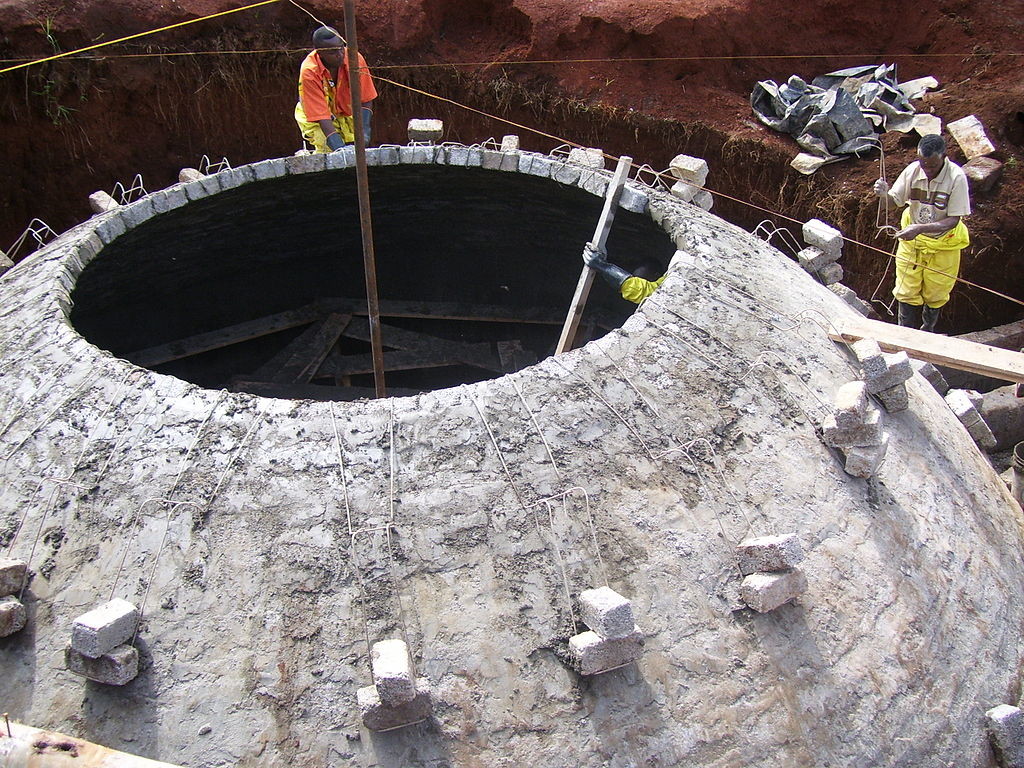Call Us
News
Biogas Digester Design & ConstructionÂ


Digester Design
One of the most critical elements of digester design, and the first thing to consider when planning to install a biogester, is your size requirements. The amount of waste that will be digested, and whether or not this will need to be diluted, will determine the size of the digester needed. The amount of waste loaded into the digester will vary according to the species of animal and the waste handling methods used. For example, when urine, which consists of more than 65% ammonia, is included with the waste, loading rates need to be reduced accordingly.Digester Start-up
To speed up the digestion startup process, methane bacteria can be added to the digester before the first load of waste is loaded. This can be achieved by initially filling the digester to 20-25% of its capacity with active waste digester sludge, which can be sourced from any municipal sewage treatment plant. Then, over the next 6-8 weeks gradually increase the volume of animal & Human waste loaded each time until the biodigester is fully functional and operating at its full capacity.Digester Operation: Optimal Environmental Conditions
For the digester to operate optimally, the following factors should be considered:- Loading intervals - regular loading intervals (preferably on a daily basis)
- pH - should be neutral acidity of pH=7.0
- Temperature - ideally set at 95F
- Carbon:Nitrogen ratio - should be 20:1
- Harmful substances - need to be keep harmful substances below levels where they can inhibit performance of the digester
- The use of a BioGas Analyzer and Methane Gas Detector
Digester Construction: Things to Consider
Now that we have covered some of the key elements of digester design, lets focus on the construction. The key points to consider when constructing a biodigester is that Biodigesters need to be airtight and well insulated, they must be able to be heated, and they must be able to have the waste contents inside stirred at regular intervals. Insulation: Because methane is only produced at optimal temperatures it is essential that heat is conserved within the digester. To save costs, this can be achieved by making use of the insulating properties of soil — In a well drained site, the digester tank can be buried; alternatively soil can be piled in a mound around the sides of the digester tank to aid insulation and prevent heat from escaping. An insulation value (R-value) of at least R=10 is recommended for digester surfaces that are in contact with soil, and R=20 for surfaces that are exposed to air. Heating: To achieve a temperature of 95F (necessary for methane production) year-round in all seasons, a heat-exchange is typically installed. This involves a system of hot water piping installed within the biodigester. Hot water, heated by an external (methane powered) water heater, flows through the pipes to maintain the desired temperature. For optimal results, it is recommended that waste is preheated before it is added to the digester. Stirring: It is important that waste is mixed inside the digester so that the bacteria are able to get to the waste to do their job, and that gas is removed from the liquid contents. Waste can be mixed continually or stirred 3-4 times a day. Mixing can be achieved in one of three ways:- Mechanically, using a mixer or agitator - this method is effective, but it is important that the digester is airtight to prevent exposure to atmospheric oxygen which poses a risk of explosion.
- Using a compressor to recirculate collected gas back into the digester liquid via a diffuser or open pipe at the base of the tank to create turbulence.
- By means of a closed-circuit manure pump
Featured Image by SuSanA Secretariat [CC BY 2.0], via Wikimedia CommonsFurther Reading Methane Generation from Livestock Waste, Purdue Extension Publication AE-105 Insulating Livestock and Other Farm Buildings, Purdue Extension Publication AE-95


